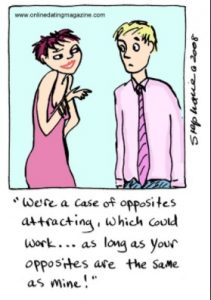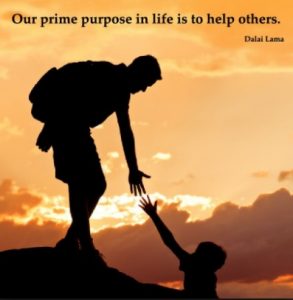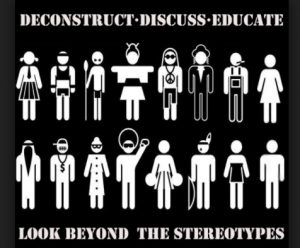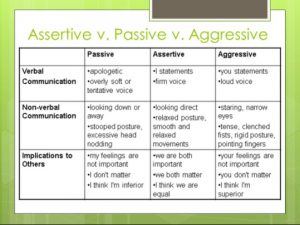Artifact 5 – Similarity Leads to Attraction…or…Opposites Attract?
I recruited ten people to complete the attraction surveys. I handed out six surveys that concluded similarity leads to attraction and four that concluded opposites attract. Each person that completed a survey could provide a statement as to why their version of the research made sense. No one indicated that they were surprised by the results.
I believe this is because each of the statements or conclusions, while opposites, can individually stand on its own. Each statement makes sense for different reasons. This is one example of how research can be unintentionally biased. Researchers must carefully consider the questions they ask to be sure they get accurate results.

Artifact 4 – Are People Who Help Happier?
My tally in this exercise was typical. Most people I know are happy and unselfish. People who are generally happy and often in a good mood are more likely to engage in prosocial behavior. They may generally have high compassion for others and be willing to share of their time and resources. On the other hand, unhappy people may be self-absorbed and focused on their own feelings or problems and have a somewhat negative affect concerning others. They may have lower compassion for other people and are less likely to offer help to others. This leads others to view them as selfish. I wonder if the negative-state relief model could be employed to help some unhappy people realize that it feels good to help others.

Artifact 3 – Are We Scaring Ourselves to Death
John Stossel’s 20-20 report exposes the media today as a major source of representative and availability heuristics. No matter the form of media (tv, radio, internet, etc.), or whether it is a reporting of crime, war or weather, the stories almost always exploit the drama or tragedy of the situation. By that I mean there seems to be no objective journalism. The stories are often just sound bites that are repeated over and over leading to representative and availability heuristics that effect our comprehension of events. The misrepresentation of crime statistics adds to our distorted perceptions. Reporters also add commentaries that play to our emotions and are often not factual.
These heuristics can influence our cognitive processes and lead us to believe that crime and tragedies occur more frequently than the facts prove. The results are that we are often conditioned to expect the worse from people or situations.


Artifact 2 – Stereotypes
Changing Stereotypes
Stereotypes have sometimes changed over time. I believe they change as interaction between, or information about, groups change. Comparing the results from studies completed in 1933 and 1951, the Japanese stereotype changed from intelligent/industrious to deceptive/sly. This change from more positive to more negative could have been due to the events of World War II. As the population’s attention was directed away from the Japanese that were their neighbors and toward the Japanese that were their political enemies, the stereotype of anyone Japanese became more negative.
I feel this is an important topic in our world today. As world events occur and as people of different cultures clash or resolve their differences, their knowledge and opinions of each other change. Hopefully, the more people live and work together, the more prejudicial stereotypes will fade.

Artifact 1 – Aggression
One definition of aggression is “hostile, injurious, or destructive behavior or outlook” (Webster’s New Collegiate Dictionary, 1977). While, in humans, it may be brought on by frustration with an environmental situation, it is more likely to continue or recur based on individual traits such as hostile attribution bias and narcissism.
I believe aggression may be expressed toward a living or non-living thing. It is also an attitude or behavior that can produce physical or non-physical damage. Kicking a trashcan is just as much a display of aggressive as kicking a dog, cat, or person. Spreading rumors or misinformation, overtly or covertly, are also acts of aggression as they are intended to cause injury in some way.
Some aggressive behavior (in humans and animals) can be instinctual and justified, but it is still aggression. Fighting for food or self-preservation out of necessity must be “hostile, injurious, or destructive” by nature. A hunter must be temporarily aggressive to shoot an animal. This form of aggression may or may not be considered justified depending on whether the hunt was for food or sport. If a soldier fighting an enemy does not have at least a temporary aggressive outlook, he cannot protect himself or his comrades. Although, this behavior may be better defined as assertive rather than aggressive.
If research has determined anything about aggression, it is that it has many forms, levels, and causes. I don’t believe there are any absolute certainties. Some instances of aggression may be necessary, and each occurrence should be considered individually. However, I am encouraged by the research on ways to reduce some unnecessary aggression as domestic abuse. It is important to recognize types of aggression (passive-aggression, assertiveness, etc.) and learn to deal effectively with it. It is possible to be assertive (to protect your own interests) and still be cooperative and compassionate.

